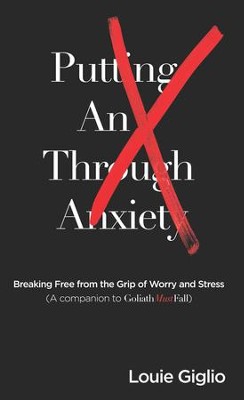Common Questions and Concerns
Description
Each of us in our respective work and ministries receive many questions from parents and parents-to-be. These questions deal with a wide range of topics and issues, such as fear, behavioral challenges, discipline, attachment, communication, lying, sensory processing, sleep habits – and the list goes on and on. While each situation has its own unique aspects, there are some fairly common questions and concerns that adoptive and foster parents raise.
In order to help parents find some of the answers they need, we are launching a series called Common Questions and Concerns. Over time we will address many of the questions and concerns that parents and caregivers have, and offer practical and proven advice to help them respond in ways that build and strengthen the connections with their children.
This post in the Common Questions & Concerns series deals with the issue of fear, and how parents can effectively help their children address and overcome their fears:
Question: My son (age 6) recently had a very traumatic experience. He and his brother were swimming in the lake and playing on a small raft when a gust of wind swept through. He was on the raft holding the rope when the wind came and lifted the raft off the water throwing him off and into the water. The water was only 2 to 3 feet deep and neither of them was injured (thankfully), but they were of course very, very scared.
I am not sure what to do now. My son told me that he is never, ever going back in the water. I know that many parents would push to get him back on the proverbial horse (and into the water) as soon as possible, but given my son’s history of trauma and his struggles with fear I wonder if that is the proper approach for him. He loves the water and I don’t want him to lose that joy or the great sensory feedback he gets from it.
Thanks so much for any advice you can give.
Empowered to Connect Team Responds: You are right in wanting him to get back in the water soon so that he doesn’t lose his love for water and lose the nurturing sensory aspects of this type of play. You are also right to be so sensitive to this situation and his reaction. It can be easy to dismiss situations like this as “no big deal” but for many of our kids, with their histories and experiences, things like this are a “big deal” and will continue to be so until we have helped them work through their fears.
Especially knowing how easily fear overtakes him, there are several primary types of encouragement that come to mind to help him recover from the trauma of this experience. We’ll mention them here in brief, and then elaborate below.
First, find creative, safe ways for him to “tell the story” of what happened. Second, brainstorm about a “magic feather” that would empower him. Third, but most important, becoming his swimming partner for a while, until the fears pass.
First, letting him tell his story about what happened (over and over if necessary). Maybe even go to a family friend’s swimming pool or a public pool where he feels safe, and in the course of swimming, or while sitting on the side of the pool having a snack, or an ice cream cone on the way home, let him tell the story about what happened and about his fear. We know that when children can give voice to their fears, they can begin to gain mastery over them. For many children, telling their story occurs best in the context of movement (like swimming in a swimming pool, or playing a card game, taking a walk, riding a bike, etc.) In addition, for many children, telling their story is easier with a “distractor” (such as eating an ice cream cone, or making a special snack or meal together). Of course, we also know that attending to sensory issues and blood sugar issues will help support the cognitive and emotional process of telling his story.
Second, think about some type of “magic feather.” Remember the children’s story of Dumbo (the elephant with large ears who could fly)? In the story Dumbo he needed something that made him feel confident and empowered until he realized that he could in fact truly fly? As in the movie, there’s no real “magic” to the “magic feather.” Instead the “magic feather” simply represents a tool to help your son address and overcome his fears. You could think of many examples of “magic feathers” – maybe a heavier raft, or some type weather alert watch, or practicing a safety-escape plan – that could help to empower him and help him to feel safer and more in control. Your son may be able to help you find just the right “magic feather” that helps him re-gain his confidence and overcome his fear. Try asking him, “What would make you feel safer when swimming in the lake?” Sometimes just the ritual of buying a special item helps promote a sense of empowerment. It certainly helps a child feel “heard” about their pain and fear.
For example, my (Dr. Purvis) eight-year old grandson’s pet snake, Billy Bob, died unexpectedly, leaving my grandson feeling sad and also guilty and fearful that he was somehow responsible for his pet’s death. We went to the school supply store and bought journals, came back to my house (turned down the air conditioner because it was 95 degrees outside!) built a fire in my fireplace, and we spent the evening journaling together in front of the fire. He would talk about it for a while, write about his feelings for a while, and then when he was “saturated” on the topic of death we would talk about something else for a while. I let him set the pace, but over the course of our evening together his journal (his “magic feather”) became an empowering tool to help him release his sadness and fear. Also, and very importantly, I was writing in my own journal with him about a source of sadness and loss in my own life – in essence modeling the process. So as he was healing and becoming empowered, so was I.
Third, but absolutely most important, assure him that you and/or his father are going to swim with him and his little sister as long as he needs you to. Of course, this takes a great deal of intent and planning on your part, but it is worth it. Consider having the children holding hands between you and your husband (all four holding hands with a parent on each side) and walking into the water together, then staying close – as close as the children need you, for as long as they need you. Maybe you can even learn some new water games, or let them teach you their favorites; or maybe even buy a few new water toys the family can play with together. By “wading back into the water” with him, you will undoubtedly help to restore his confidence and allow him to address his fears, even as it builds connections and sense of deep trust between you (as parents) and him.
In the end, your goal is to help him overcome his fears and rediscover the joy (and therapeutic benefits) of playing and swimming in the water. Sometimes it is helpful to use “gimmicks,” “gadgets,” and “gizmos” as transitional tools for helping children heal, but we are always decidedly aware that these things are only bridge-making tools. The true healing for our children only comes in safe, loving, relationships with nurturing, attentive, and tender parents. While we use these bridging mechanisms, the ultimate message we want our children to hear, understand and take to heart is that we are there for them when they need us, in the ways they need us, for as long as they need us!
Written by: The Empowered to Connect Team
 Overcome challenges with guided prayer, journal prompts, and God’s wisdom using iDisciple Growth Plans.
Overcome challenges with guided prayer, journal prompts, and God’s wisdom using iDisciple Growth Plans.

-12.png)







